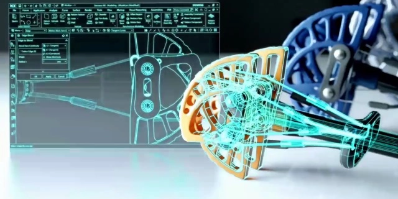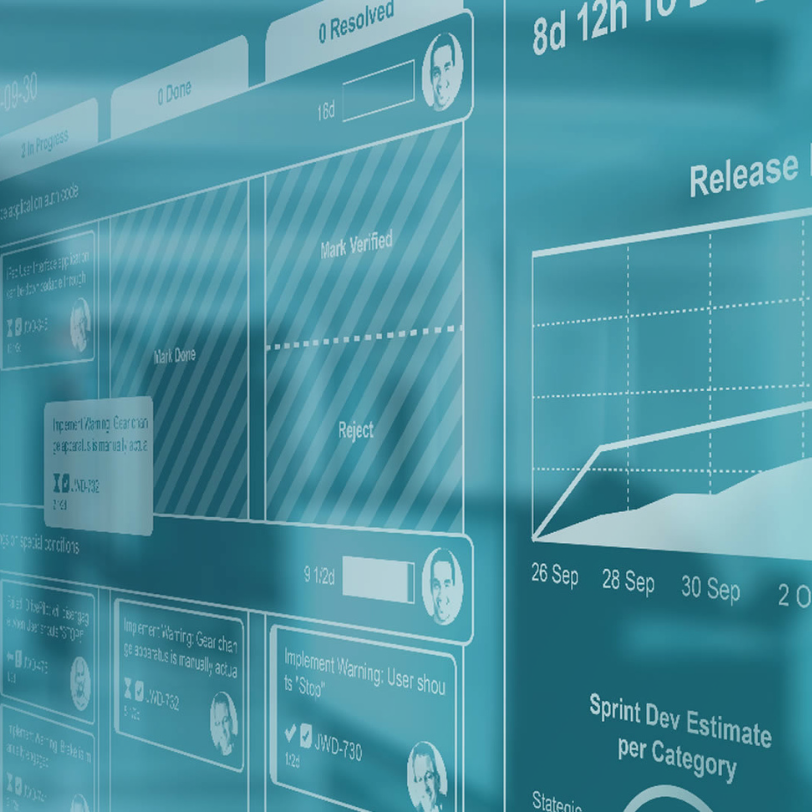Try a 30-day Free Trial of Polarion
Get 30 day access to the full version of Polarion.
REQUEST A FREE PRODUCT GUIDE
Get Product Guide
Polarion ALM allows you to connect teams and projects, and improve application development processes with a single, unified solution for requirements, coding, testing, and release.
Polarion ALM gives organizations one unified solution that delivers project transparency through real-time aggregated management information. Everyone is aligned around what is being built and why to drive advancement while protecting integrity and compliance.
Want to find out more about Polarion? Explore our range of downloadable resources.




Gain a comprehensive overview of the data and that matters to you. Easily build customisable charts and reports, and share them across teams.
Pass any audit, compliance, or regulatory inspection with traceability that is easily implemented and guaranteed via automatic change control of every requirement.
Polarion stores all artifacts and versions in repositories to enable accountability and transparency throughout the entire development lifecycle.
Create test cases easily link them them to corresponding work items such as requirements, change requests, and other test cases—no overcomplication.
Requirement specification documents are instantly sent to stakeholders for review, enabling swift and decisive action that keeps things moving.
System Requirements Specifications, Verification Procedures, Project Plans & Tasks - everything is stored in version control repositories.
| NX MACH Designer |
NX Layout |
NX MACH 1 Design |
NX MACH 2 Product Design |
NX Cool Shape Design |
NX MACH 3 Product Design |
NX MACH 3 Industrial Design |
|
|---|---|---|---|---|---|---|---|
| Feature category | |||||||
| Feature | ✓ | ✓ | ✓ | ✓ | ✓ | ✓ | ✓ |
| Feature | ✓ | ✓ | ✓ | ✓ | ✓ | ✓ | ✓ |
| Feature | ✓ | ✓ | ✓ | ✓ | ✓ | ✓ | ✓ |
| Feature | ✓ | ✓ | ✓ | ✓ | ✓ | ✓ | ✓ |
| Feature | ✓ | ✓ | ✓ | ✓ | ✓ | ✓ | ✓ |
| Feature | ✓ | ✓ | ✓ | ✓ | ✓ | ✓ | ✓ |

Get 30 day access to the full version of Polarion.
Polarion ALM gives organisations one unified solution that delivers project transparency through real-time aggregated management information. Everyone is aligned around what is being built and why to drive advancement while protecting integrity and compliance.
This helps teams respond faster and with better quality to new business opportunities and customer demands.

Increase productivity with intuitive & role-based user interface. Achieve better quality and regulatory compliance through end-to-end traceability and automated audit trails.
Adopt modern agile techniques at once or incrementally with out of the box project templates that can be adjusted to your needs and optimise planning, prioritisation and release predictability.
%2015%25-34.png)

Get 30 day access to the full version of Polarion.
Polarion ALM gives organisations one unified solution that delivers project transparency through real-time aggregated management information. Everyone is aligned around what is being built and why to drive advancement while protecting integrity and compliance.
This helps teams respond faster and with better quality to new business opportunities and customer demands.

Increase productivity with intuitive & role-based user interface. Achieve better quality and regulatory compliance through end-to-end traceability and automated audit trails.
Adopt modern agile techniques at once or incrementally with out of the box project templates that can be adjusted to your needs and optimise planning, prioritisation and release predictability.
%2015%25-34.png)
In the competitive landscape of industrial machinery, the relentless pursuit of innovation is the hallmark of success. For XYZ Corp, a longstanding player in the industry, this pursuit was no less than a mission.
Faced with the challenge of keeping pace with the rapid advancements in technology, they embarked on a transformational journey that would redefine the way they approached manufacturing.

In the competitive landscape of industrial machinery, the relentless pursuit of innovation is the hallmark of success. For XYZ Corp, a longstanding player in the industry, this pursuit was no less than a mission.
Faced with the challenge of keeping pace with the rapid advancements in technology, they embarked on a transformational journey that would redefine the way they approached manufacturing.

In the competitive landscape of industrial machinery, the relentless pursuit of innovation is the hallmark of success. For XYZ Corp, a longstanding player in the industry, this pursuit was no less than a mission.
Faced with the challenge of keeping pace with the rapid advancements in technology, they embarked on a transformational journey that would redefine the way they approached manufacturing.

Yes, Siemens offers a cloud-based version of Polarion for organisations that want it. The cloud-based version offers the same functionality with the added benefits of flexibility and scalability for growing businesses.
Polarion includes native features for secure document storage, access control, and compliance documentation. These and other key features enable organisations to adhere to evolving regulatory standards and prepare for audits.
Yes, Polarion offers integration capabilities with version control systems, bug tracking tools, and other third-party software commonly used in development processes. This helps to ensure smooth data exchange and compatibility.
Polarion ALM pricing varies based on factors including the number of users, features required, and deployment options. Contact us to learn more and we'll help you find the right license for your needs.
Polarion includes various features to assist with requirements management. These include version control, traceability, collaboration, custom workflows, a central repository, and reporting and analytics functionality.